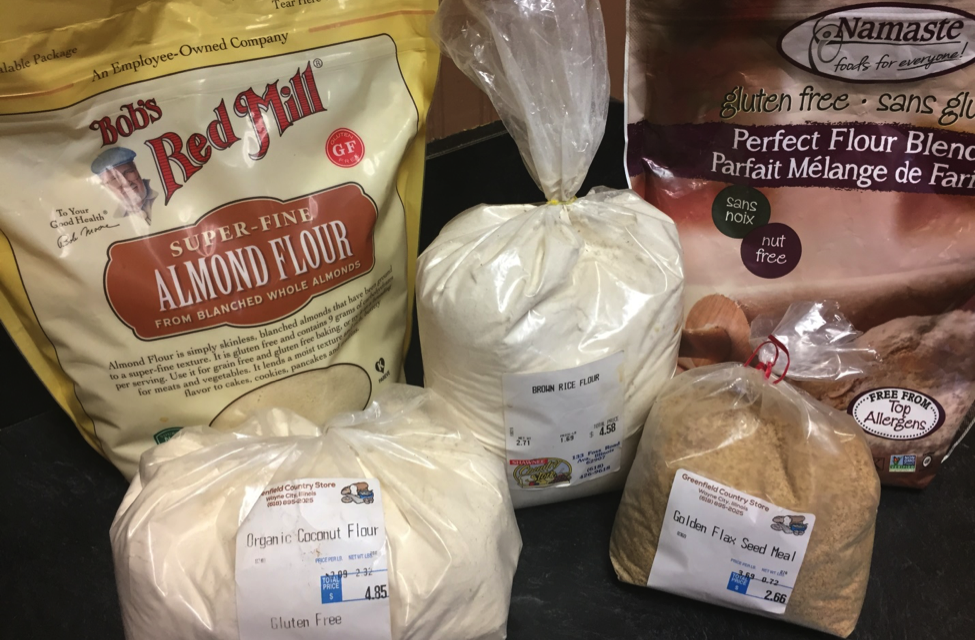Do you use spelt? What about buckwheat or coconut? How about recipes using blanched almond flour? It is incredible how many different flours and flour blends are now commercially viable! When I was learning to bake there were only a handful of flours available – bleached white, cake flour, and whole wheat.
Due to a host of issues, many Americans can no longer digest wheat flours. Since we live in a market-driven economy, there is now a variety of new flours to use as substitutes, but it can get tricky to learn the properties of these exotic flours. They have a different set of rules to determine when using these new products.
Take coconut flour for instance, if you don’t allow it time to absorb the liquid, it will result in a crumbly cake.
Almond flour lacks the binding power of the gluten in bread so eggs are essential when baking with this flour. Almond flour can either be blanched or unblanched and that one word on the label will make a tremendous difference in the quality of your baking.
If you are trying to cook non-GMO that means that you are spending top dollar for certified organic flours but with the unresolved issues with genetically modified foods that cost may well be an investment in long-term health.
Let’s get to know the most popular non-wheat flours presently on the market. One of the easiest which with to start is almond flour. This is ground from almonds so make sure you read the label carefully as you only want to buy blanched almond flour for baking. Unblanched almond flour has the skin of the almond intact when it is ground, making the flour higher in fiber but coarser. Blanching almonds is the process of dropping the almonds into boiling water for a few minutes then rinsing the almonds in cold water. Blanching almonds cause the skins to fall off, resulting in white flour easily. Blanched almond flour is preferred for baking for its’ lighter texture.
One tip that is essential for success when baking with not only almond flour but with any non-wheat flour is in the way you measure out the flour. Almond flour has a different texture and tends to clump up if you reach into the bag and scoop up a cup full. The flour will be packed in too tightly and will affect the result of your baking. A better way to measure almond flour is to take a handful or a spoonful and gently sprinkle it into the measuring cup. Using a hand sifter is not recommended.
Buckwheat flour is not technically a grain as it is a cousin to rhubarb. It has a hearty grassy flavor (translation: it’s not your mama’s sweet wheat flour it’s an acquired taste!). The strong-flavored but nutrient-packed flour is usually mixed with other flours to off-set its strong flavor.
Flaxseed flour or meal can be used as an egg or fat substitute. It is high in fiber and is a good source of omega-3’s. Oat flour can be made in your kitchen by grinding oatmeal in a food processor. It adds a rich, nutty flavor but must be combined with other flours for baking as it has no gluten. Corn flour is milled from the whole corn kernel and can be used when mixed with other flours for bread and batter.
I have used all the above flours except spelt. Many of my organic and homesteading cookbooks praise spelt as a great addition to flour blends for baking. Baking with the new flours is like any other skill set you want to conquer. It takes time and trial and error to discover the right flours and recipes that work for your family’s tastes. Please try an almond brownie recipe or use oat flour to enrich your next batch of pancakes. Have a peaceful day!
Ann May






